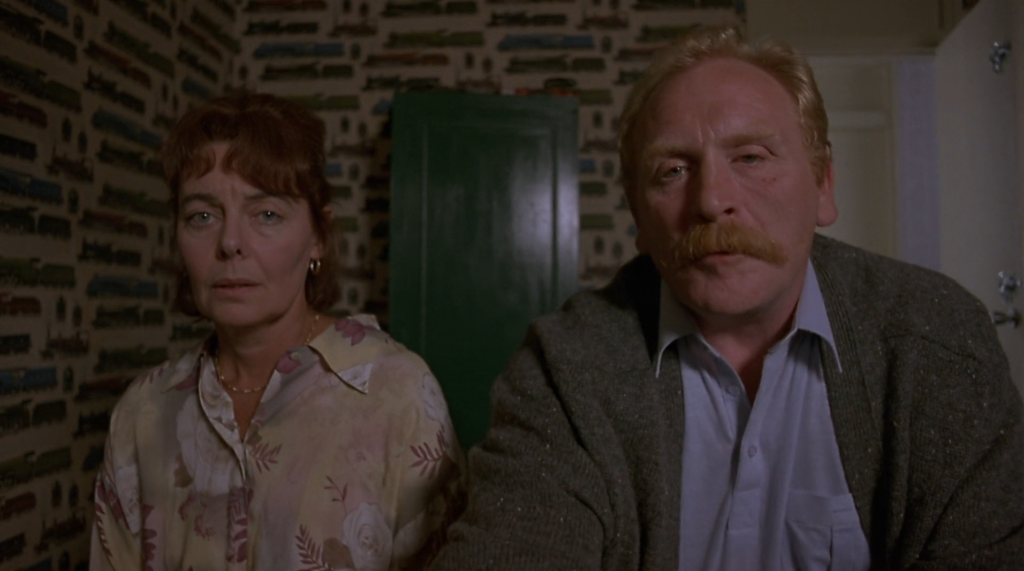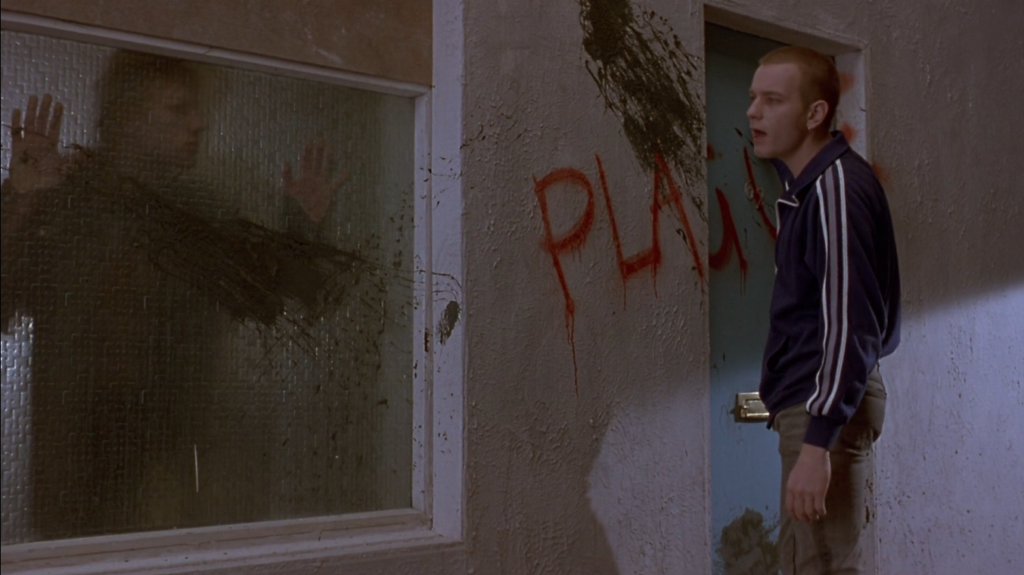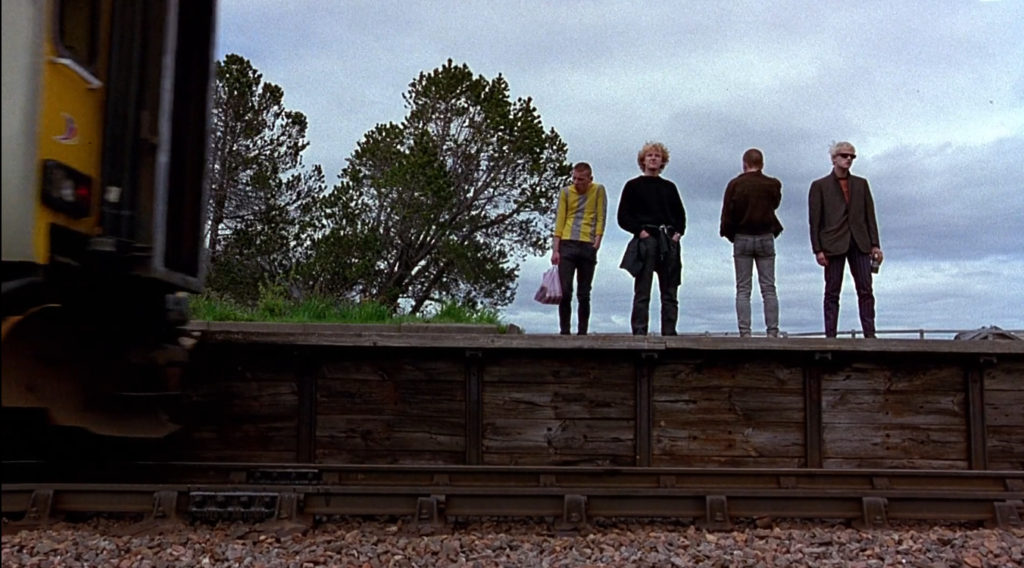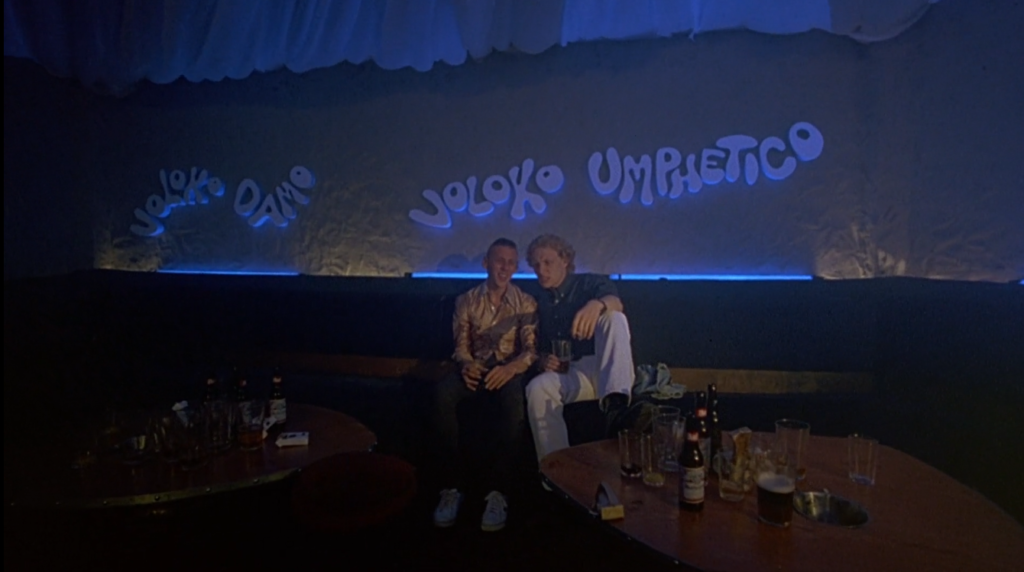Young People

In Trainspotting, young people are presented in a disadvantaged position. All young people we see in the film are or will be going through something. Renton suffers addiction, Begbie is a violent mess who has to crash in Renton’s London apartment, Tommy goes through a rough breakup that results in his death, etc. Young People in Trainspotting are represented as having little future and little ambition, or so they believe themselves. This changes by the end when Renton runs away with the money and he realises he can make something of his life, which is a positive note to end a movie that often shows only the negatives of youth.
Older People

Older people are not very present in Trainspotting. There are a few scenes involving the character’s parents,. namely Renton’s, Gail’s and Diane’s . From what we are shown, the older people in Trainspotting are represented usually as quite kindly and at least attempt to be friendly. There is the dinner scene with Renton’s parents where his dad snaps at him for his drug abuse, but aside from that, they attempt to help him kick the habit by forcing him to go cold turkey. Gail’s parents are kind to Spud and are understanding of the fact that he made a mess while drunk, and Diane’s parents are very nice and welcoming to Renton. They are represented as a group of people who grew up with more opportunities than the current youth of Trainspotting.
Working Class People

Trainspotting is not a glamourous film, and it’s portrayal of the working class is a good example of this. A lot of the ensemble cast are of the lower classes, explaining their need to go to drugs to feel something in a world where they haven’t been given anything to experience. The only people at the start of the film who don’t do drugs are Tommy and Begbie, who both seem well off. Tommy however loses his comfortable social state when Renton inadvertently causes his girlfriend to kick him out of her house, bringing him down considerably. He’s forced into a grimy looking, very cheap apartment, absolutely nothing inside, not even a proper bed. This display of the poor working class, in dirty housing with little possession, also allows the audience to sympathise more with the character’s reasoning of turning to drugs. The working class are presented as struggling and in need of help, which leads them to drugs as an attempt to get something out of a life they have nothing in.
Scottish People

Due to the story taking place in Scotland, the main characters are obviously Scottish. The movie doesn’t really bring a lot of attention to this, though. The Scottish people are presented as the status quo of the story, and so we are led through normal Scottish lives. There is a scene where they go see some Scottish mountains, which in any other movie would be a big moment of beauty and awe in the characters, but in Trainspotting they really don’t care about it, and don’t see the point in going all the way there to look at them. It would just be normal to them. Scottish people are not represented in a romanticised light, nor in a negative one: what the characters see as normal is presented to the audience as normal.
Addicts

The addicts in Trainspotting, despite making up the main cast, are not presented positively in the film. All scenes of drug taking is not glamorous at all, quite the opposite. They are most often seen cooking up and shooting heroin in a dingy backroom, which looks disgusting and not somewhere people should be. The scenes in which Renton takes drugs are always presented as a low point: he betrays his family and friends by going to get a hit from Mother Superior immediately after being let off a prison sentence under the promise of going to rehab, he OD’s and is treated without any care by Mother Superior who just lugs him around and by the taxi driver who takes him to the hospital, who dumps him on the ground, and when he shoots up in a bus toilet, which is a low point due to him being totally clean up to that point. While not presented positively, the addicts are given a lot of sympathy, like Tommy resorting to heroin to feel better after his life is ruined. Addicts aren’t even really presented in a villainous way either: the worst character in the whole movie, Begbie, is totally clean throughout the entire film. Addicts are presented as human beings deserving of sympathy and care.
Men

Men make up the main cast of characters in Trainspotting, giving us a lot of different representations of men. Trainspotting gives us aggressive men like Begbie or sensitive men like Tommy, etc. There is a lot men have in common in Trainspotting, though. All of them want relationships, which is shown in the scene where the above screenshot is from, where Spud and Sick Boy talk about their gripes with their respective partners, and in the same sequence at the bar Renton gives narration on how he wants company and gets with Diane. Other aspects of male representation is the constant banter between the characters and the stereotypical male pastime of football, but opposed to what these stereotypical representations would suggest, the male characters are allowed to be emotional, like the scene where the aby dies and all the characters are very upset about it.
Women

Women don’t have as much representation as men by a lot. Often the women are restricted to roles of girlfriend, wife or mother. They are given little screentime compared to the male characters as well, but they aren’t totally sidelined. While they usually are in the role of girlfriend to the main characters, they are given moments that characterise them and give them strength, like Spud’s girlfriend Gail saying that she’s been refusing to have sex with him just because she finds it funny that it annoys him. But compared to male characters, there isn’t much representation of women in the film.